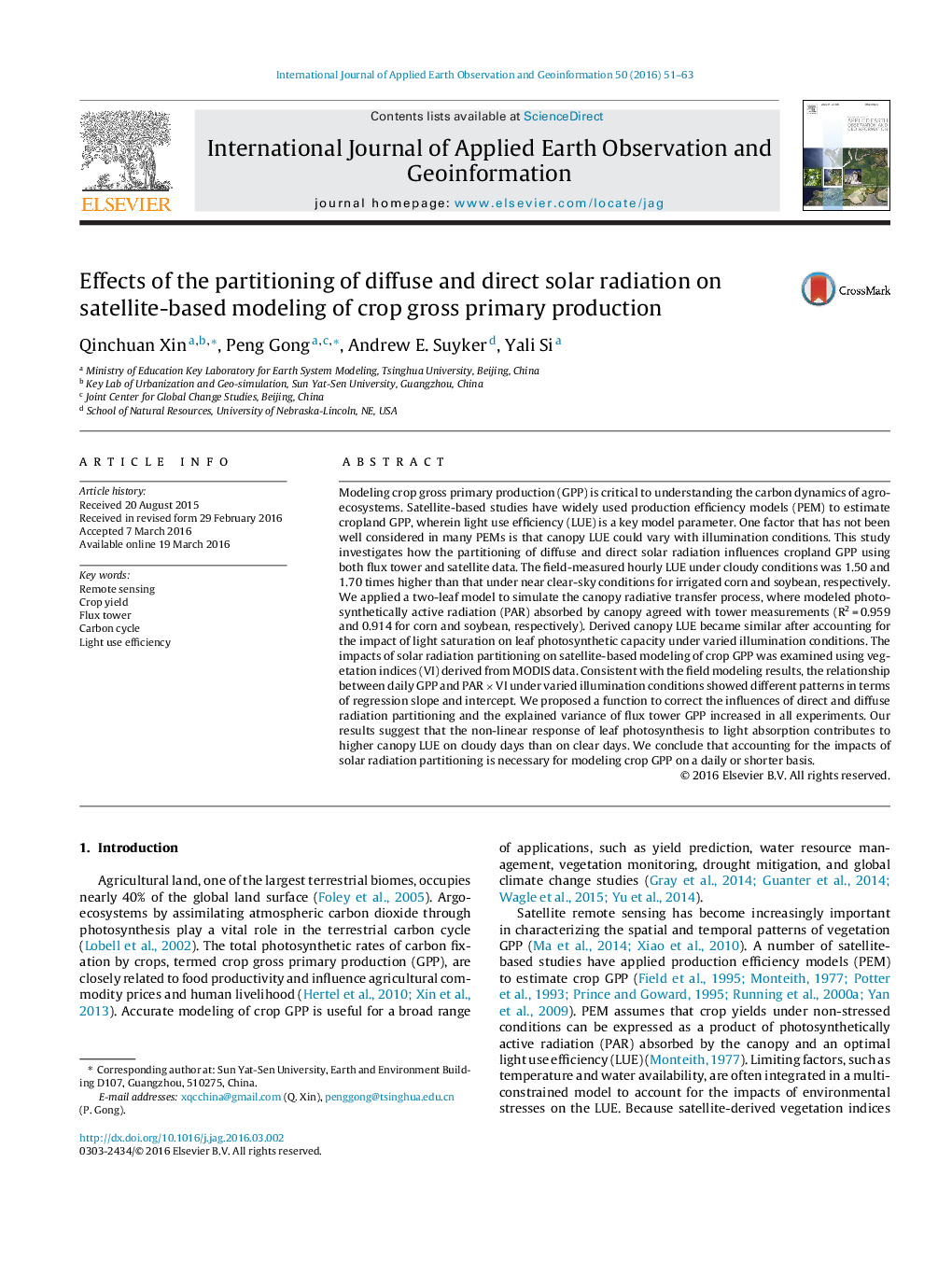| Article ID | Journal | Published Year | Pages | File Type |
|---|---|---|---|---|
| 4464581 | International Journal of Applied Earth Observation and Geoinformation | 2016 | 13 Pages |
•Crop light use efficiency is higher under cloudy than clear-sky conditions.•Canopy radiative transfer process contributes to varied light use efficiency.•Solar radiation partitioning influences daily GPP modeling with MODIS data.•A new function corrects the impact of solar radiation partitioning on GPP.
Modeling crop gross primary production (GPP) is critical to understanding the carbon dynamics of agro-ecosystems. Satellite-based studies have widely used production efficiency models (PEM) to estimate cropland GPP, wherein light use efficiency (LUE) is a key model parameter. One factor that has not been well considered in many PEMs is that canopy LUE could vary with illumination conditions. This study investigates how the partitioning of diffuse and direct solar radiation influences cropland GPP using both flux tower and satellite data. The field-measured hourly LUE under cloudy conditions was 1.50 and 1.70 times higher than that under near clear-sky conditions for irrigated corn and soybean, respectively. We applied a two-leaf model to simulate the canopy radiative transfer process, where modeled photosynthetically active radiation (PAR) absorbed by canopy agreed with tower measurements (R2 = 0.959 and 0.914 for corn and soybean, respectively). Derived canopy LUE became similar after accounting for the impact of light saturation on leaf photosynthetic capacity under varied illumination conditions. The impacts of solar radiation partitioning on satellite-based modeling of crop GPP was examined using vegetation indices (VI) derived from MODIS data. Consistent with the field modeling results, the relationship between daily GPP and PAR × VI under varied illumination conditions showed different patterns in terms of regression slope and intercept. We proposed a function to correct the influences of direct and diffuse radiation partitioning and the explained variance of flux tower GPP increased in all experiments. Our results suggest that the non-linear response of leaf photosynthesis to light absorption contributes to higher canopy LUE on cloudy days than on clear days. We conclude that accounting for the impacts of solar radiation partitioning is necessary for modeling crop GPP on a daily or shorter basis.
